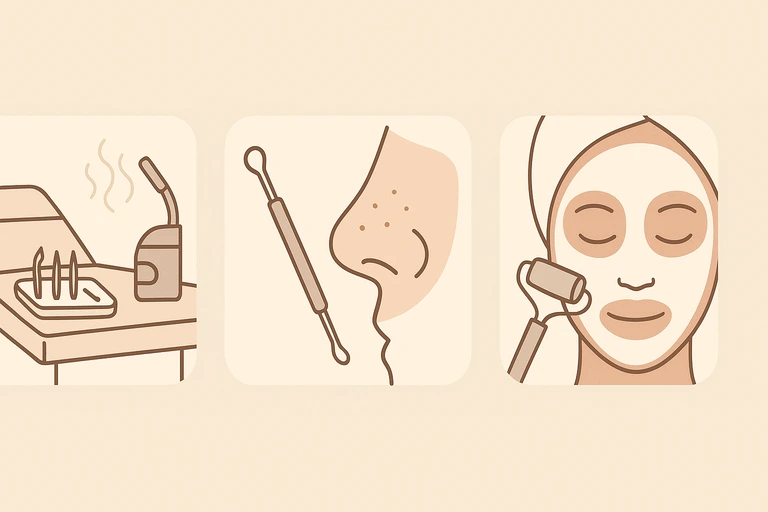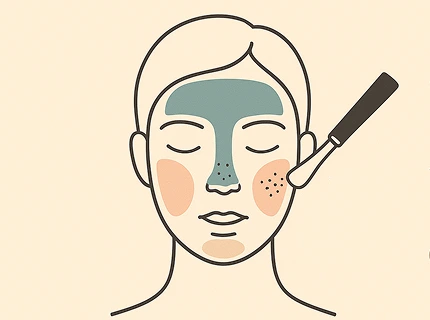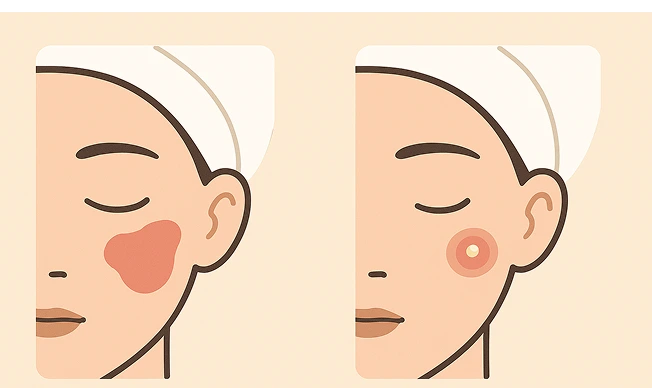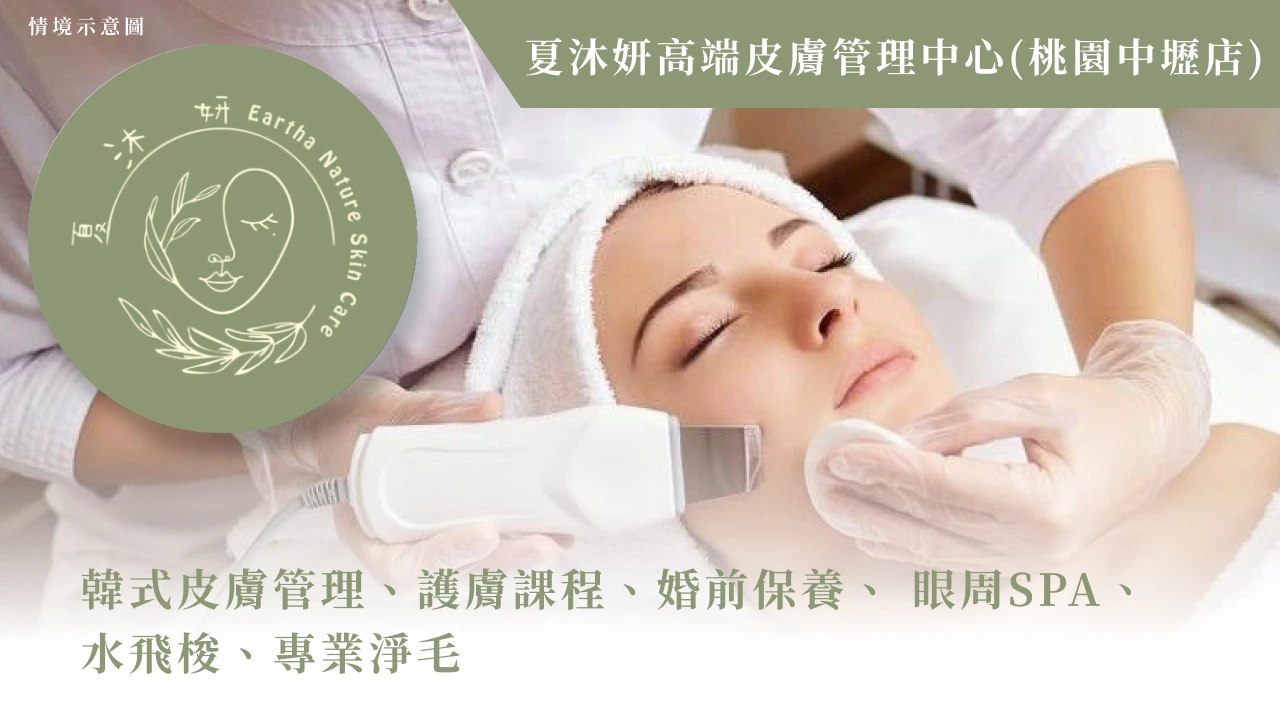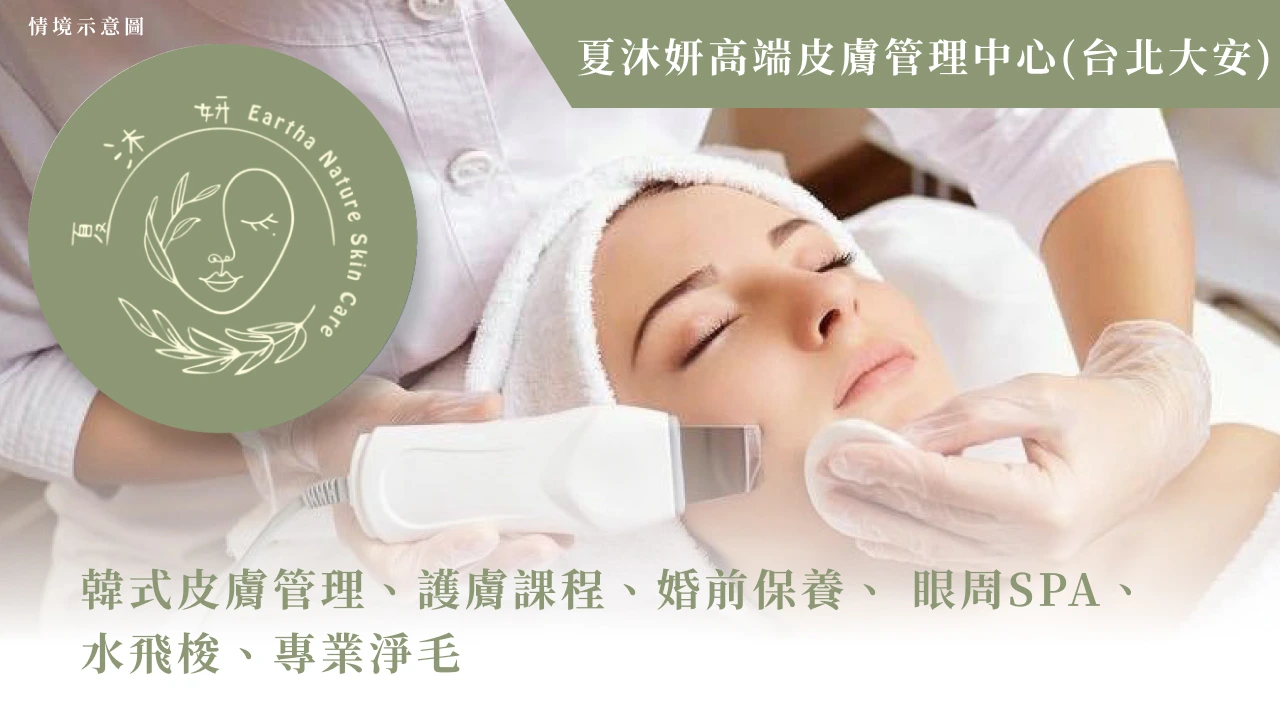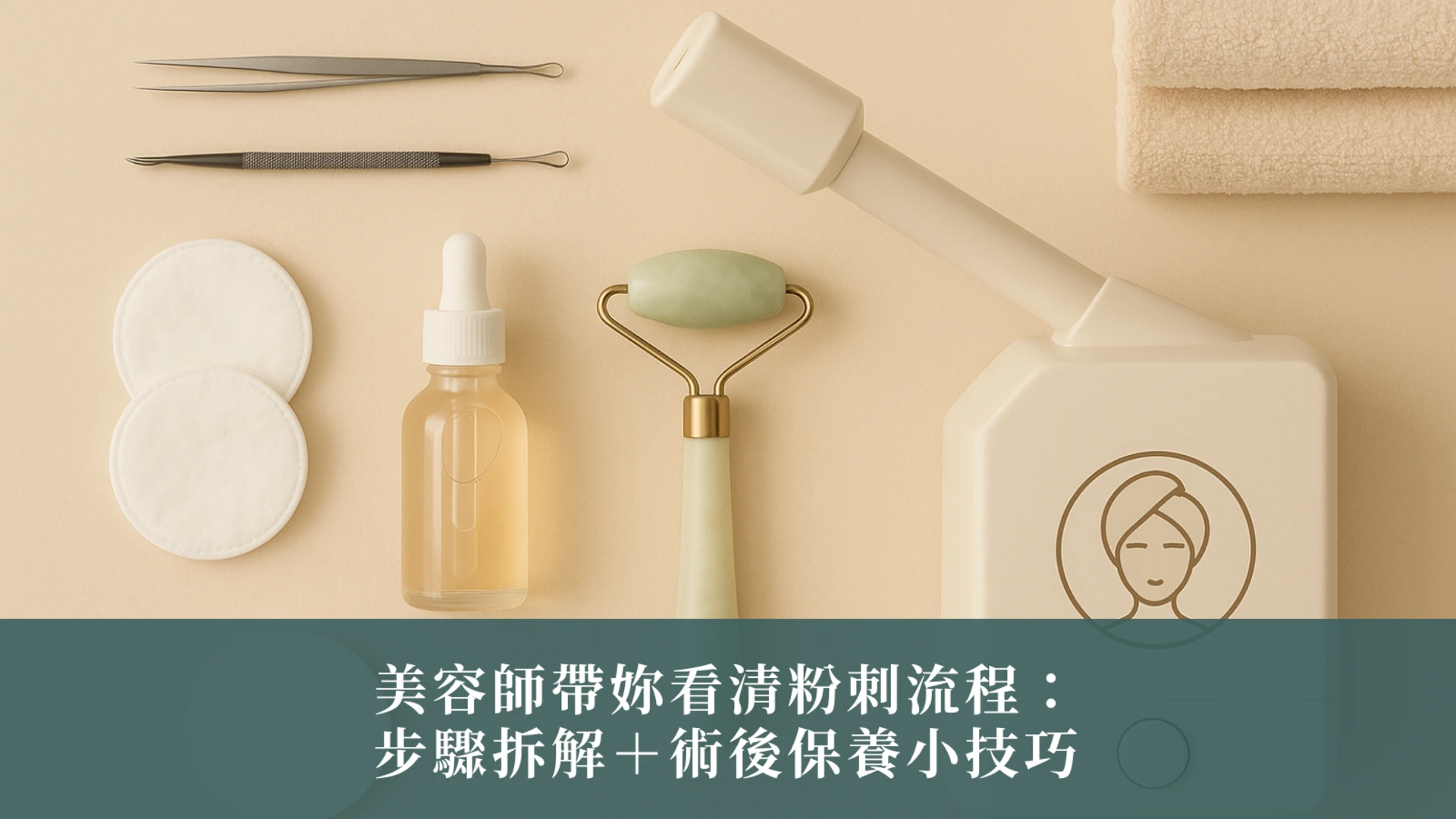
A beautician shows you how to clear up acne: step-by-step instructions + tips for post-surgery care
Do you think the process of clearing acne is as simple as "squeezing out acne"? In fact, in the eyes of beauticians, from makeup removal to astringency, each step has its own professional logic. This article will take you through the complete process of clearing acne in beauty salons, from preparation, operation to final maintenance, so that you can understand what details you will experience before entering the treatment.
This article highlights:
- How to prepare for the acne removal process? From environmental disinfection, makeup removal and cleaning to softening pores, helping pores open smoothly.
- The steps for removing acne are completely broken down, and the squeezing force and tools are adjusted according to the facial area to completely remove acne without causing any damage.
- Post-operative care calms and reduces redness, tightens pores, strengthens repair, and reduces the risk of redness, swelling and inflammation.
- The process will adjust the steps according to the number of acne, skin sensitivity and inflammation to make the treatment safer and more stable.
How to prepare for the acne treatment? A complete analysis of the steps before the facial
Before the acne treatment officially begins, the beautician has already quietly started the "preliminary work". This stage is like laying a soft mattress for the skin, so that the subsequent cleaning and squeezing can proceed smoothly and reduce discomfort.
First, the environment will be disinfected and the equipment will be prepared . This includes the beauty bed, towels, hand cleaning, and acne needles, clips and other tools. This ensures that there will be no infection during the operation. Next is makeup removal and deep cleaning , which completely removes the residual makeup, sunscreen, sebum and dirt on the surface to avoid squeezing dirt back into the pores when cleaning acne.
After cleaning, the beautician will simply observe and analyze the skin condition to confirm the scope of acne cleaning, skin condition and areas that may need special attention. For example, inflamed papules and red and swollen areas are not suitable for hard squeezing.
Then, we will start the key softening and soothing process . Through steam hot compress, warming or applying mild softener, we can help soften the stratum corneum and open the pores, so that the acne can be removed more easily and completely later, and the stinging sensation during the squeezing process can be minimized.
Complete breakdown of the steps to clear acne: How do beauticians do it?
When it comes to actually clearing acne, the beautician actually seems to have a "facial map" in his hands. The acne characteristics and operation methods in each area are slightly different. This is also the most technically demanding part of the acne clearing process.
The T-zone (forehead and nose) is usually the hardest hit by acne. The pores here produce a lot of oil, and there are a lot of whiteheads and blackheads. The beautician will use the acne needle to gently pick out the acne according to the direction of the pores and with a moderate squeezing angle to avoid damaging the surrounding tissue.
When it comes to the cheeks and chin area , the skin is relatively fragile and prone to redness. When operating, the force should be controlled to be light, and a cotton swab should be used to assist in squeezing, so that the acne will slowly float to the surface without pulling the pores. This requires more delicate patience to avoid squeezing too much and causing bruises or redness.
In addition, the beautician will always observe the integrity of the acne to confirm whether there are any residual roots, to ensure that the acne removed is clean and complete, and the skin is not prone to recurring acne. If some deep or inflamed acne cannot be completely removed on the spot, professional beauticians will choose to postpone the operation to avoid excessive skin irritation.
The entire acne removal process is about striking a balance between "complete removal" and "safe and gentle", which is the most critical value of professional acne removal.
How to maintain after acne removal surgery? Learn the key points of repair at once
After clearing acne, the skin will enter a short "repair period". The finishing process at this time is very critical. If done well, it can greatly reduce the chance of redness and inflammation.
The first is to reduce redness and inflammation . The beautician will immediately help you apply a soothing mask or use a repair essence. Soothing ingredients such as aloe vera, centella asiatica, and chamomile can help calm the heated skin, while replenishing lost moisture and reducing the tightness after pore contraction.
Then , some beauty salons will use cold compresses or ice ball rollers to help shrink pores, stabilize blood vessel dilation, reduce redness faster, and reduce possible pigmentation problems that may occur later.
The last step is a light maintenance seal . The beautician will apply a thin layer of repair lotion or soothing gel depending on the skin condition to protect the skin so that it still has sufficient protection after leaving the beauty salon and prevent environmental dirt from affecting the pores that have just been cleaned.
Adjustments to the acne-clearing process: Which skin conditions will receive special treatment?
Although there seems to be a standard process for clearing acne, in practice, beauticians will flexibly adjust the process according to each person's skin condition to make the operation both effective and safe. These "invisible adjustments" are the accumulation of professional experience.
For clients with a lot of acne , beauticians will sometimes clean them in batches to avoid removing too much at once and causing the skin to become overwhelmed by the pressure of redness and swelling. Some treatments may even be divided into two sessions to allow for a full recovery period.
When it comes to sensitive skin or a thin stratum corneum , the amount of cleaning and the squeezing force will be appropriately reduced, and even certain areas prone to redness may be skipped, such as the wings of the nose and around the corners of the mouth, which are easily irritated.
In addition, inflamed acne or cystic acne are usually not squeezed forcefully during professional acne removal. If these types of acne are removed hastily, it is easy to spread the inflammation or leave acne scars. It is recommended to stabilize the skin condition first and then arrange acne removal.
When the beautician is doing the operation, what matters is not "how much to squeeze", but "how to squeeze it to be best for the skin". The real good acne removal is to make your pores clean and go home safely to repair, without having to pay a price for a moment of pleasure.
When you go to a beauty salon to get your acne removed, you no longer have to worry about the stereotype of "painful to the point of tears". Professional beauticians use a complete process to make squeezing acne more gentle and controllable, with stable results and faster skin recovery. If you have loved and feared acne removal in the past, why not let a professional take you through it again and give your skin a stable and clean start.
